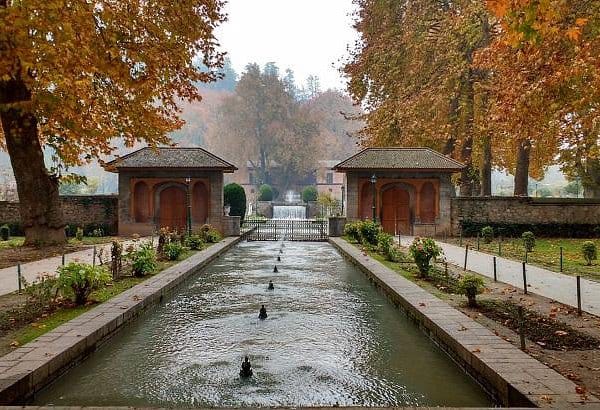Azad Hussain
Just after the summer ends, Harud, the autumn season of Kashmir, begins, immersing the people of Kashmir in its beauty and abundance. For the native farmers of this region, Harud is not merely a season; it’s a golden period of contentment and plenty.
Harvesting is a universal concept, representing the culmination of a farmer’s tireless hard work. The satisfaction derived from reaping what was sown with sweat and toil is a reward like no other. However, in Kashmir, this feeling of contentment reaches extraordinary heights. Here, the season of harvesting, locally known as “Harud,” is celebrated with unparalleled fervor.
One unique aspect of Harud in Kashmir is its timing. It arrives as a prelude to winter, a season of rest for most, including the farmers. The region’s inhabitants eagerly anticipate the respite from the intense summer heat during the upcoming three months of December, January, and February, which follow the culmination of Harud. During Harud, which spans from the end of September to almost November, the temperatures remain optimal, creating the perfect atmosphere for both work and relaxation.
In the rural areas of Kashmir, where agriculture, particularly paddy, apple farming, and walnut cultivation reign supreme, Harud takes on a special significance. Families come together to work in the apple orchards, paddy fields, and walnut orchards, making lunch a communal affair at the workplace. This practice harks back to generations, strengthening family bonds and passing down farming skills from parents to children.
Kashmir’s autumn season, which extends from September to November, offers a visual spectacle like no other. The landscape transforms as leaves turn golden and reddish, creating a mesmerizing panorama. The weather, with temperatures ranging from 9°C to 20°C, brings cool and gentle breezes, making it the ideal time for visitors to experience this picturesque region.
Harud in Kashmir also heralds the harvesting of the prized Kashmiri saffron, known for its unique flavor and color. This fragrant spice has a wide range of applications, from food to pharmaceuticals, cosmetics, perfumery, and textile dyes. The saffron harvest season, from late October to mid-November, holds great economic significance for the local economy.
Rice cultivation is another vital aspect of Kashmir’s cultural heritage. All the districts of the Valley contribute to rice cultivation, relying on 100% irrigated fields fed by melting snow at higher altitudes of the Kashmir Valley. This natural water source is another blessing for the natives. The autumn season marks the paddy harvesting period, a meticulous process involving cutting, stacking, and threshing to separate the grains.
The apple harvest, perhaps one of the most iconic features of Harud in Kashmir, is a sight to behold. Orchards across the region are laden with ripe, juicy apples. Families, friends, and farmworkers come together to pick the apples, fostering a sense of togetherness and shared tradition. These apples, locally known as “Tschoont,” are renowned for their exceptional flavor and quality. Kashmir, alongside Himachal Pradesh and Uttarakhand, stands as a primary source of the nation’s apple output due to its ideal climate for apple cultivation.
Harud in Kashmir is not merely a season; it’s a celebration of nature’s bounty and the enduring spirit of its people. The beauty of this golden period, both in its landscapes and traditions, is something to behold and cherish. As the world transitions from summer to winter, Kashmir stands as a testament to the profound connection between the land, its people, and the seasons that shape their lives.
Azadhussainganie91@gmail.com




